How the NFL blocks Black coaches
Despite the league’s end-zone pledge to “END RACISM,” Black coaches continue to be denied top jobs in a league where nearly 60 percent of the players are Black.
It is a glaring shortcoming for the NFL, one highlighted by the findings of an investigation by The Washington Post. Black coaches tend to perform about as well as White coaches, The Post found. But while White candidates are offered a vast and diverse set of routes to the league’s top coaching jobs, Black coaches face a much narrower set of paths. They have had to serve significantly longer as mid-level assistants, are more likely to be given interim jobs than full-time ones and are held to a higher standard when it comes to keeping their jobs.
Since 1990, Black coaches have been twice as likely as others to be fired after leading a team to a regular season record of .500 or better.
Amid growing scrutiny of the issue, The Post compiled and analyzed three decades’ worth of data and conducted interviews with 16 of the 24 living current and former NFL head coaches who identify as Black, as well as dozens of other coaches, former players, team executives, agents and others.

Black workforce, White bosses
The disparity in the percentage of NFL
players and head coaches who are Black remains stark.
The Rooney Rule
took effect in 2003.
No data
available
Defensive
coordinators
Offensive
coordinators
Head
coaches
Sources: TIDES (The Institute for Diversity and Ethics
in Sport), Global Sport Institute, Post reporting

Black workforce, White bosses
The disparity in the percentage of NFL players
and head coaches who are Black remains stark.
The Rooney Rule
took effect in 2003.
No data
available
Defensive
coordinators
Offensive
coordinators
Head
coaches
Sources: TIDES (The Institute for Diversity and Ethics in Sport),
Global Sport Institute, Post reporting
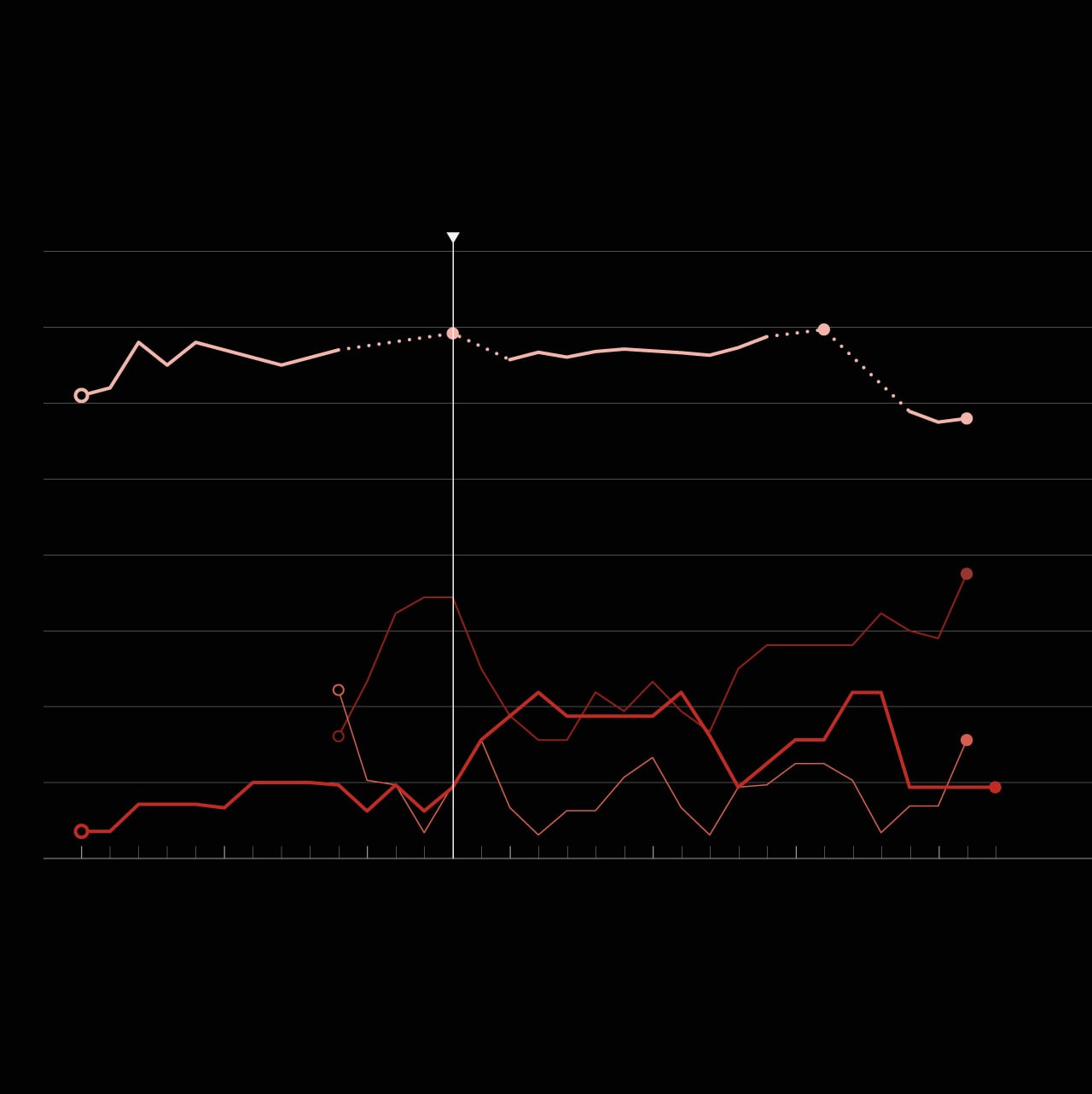
Black workforce, White bosses
The disparity in the percentage of NFL players and head coaches who are Black remains stark.
The Rooney Rule
took effect in 2003.
No data
available
Offensive
coordinators
Defensive
coordinators
Head
coaches
Sources: TIDES (The Institute for Diversity and Ethics in Sport), Global Sport Institute, Post reporting
The data quantifies the frustration felt by many of those coaches, which erupted into the public eye this year with a lawsuit by Brian Flores, fired by the Miami Dolphins in January, that accuses the league and its teams of racism in their hiring and firing practices. The lawsuit and its potential implications hover over the NFL as its new season unfolds with just three Black head coaches: Todd Bowles of the Tampa Bay Buccaneers, Lovie Smith of the Houston Texans and Mike Tomlin of the Pittsburgh Steelers.
That’s the same number as in 2003 — the year the NFL, under intense external pressure, introduced the Rooney Rule, which required teams to interview at least one candidate of color for open head coach and front-office jobs.
Black Out
This football season, The Washington Post is examining the NFL’s decades-long failure to equitably promote Black coaches to top jobs, despite the multibillion-dollar league being fueled by Black players.
Taken together, The Post’s analysis mirrors the sentiment among Black coaches that they are playing by a different set of rules than their White counterparts. The result, Black coaches said, is a league where many Black assistants have resigned themselves to the notion that they will never get an opportunity to be a head coach — a position that, in addition to the immeasurable prestige, also could pay, on average, 10 times what a mid-level assistant makes — while others have left the profession entirely.
“It seems like the criteria moves,” Leslie Frazier, defensive coordinator for the Buffalo Bills, said in an interview. “One week, or one year, it’s ‘We want an offensive-minded guy.’ Another year: ‘We want a guy with a Super Bowl-winning background.’ What’s the criteria? Sometimes it’s because he’s ‘a great leader.’ Sometimes it’s because he ‘came up the same way I came up.’ But the common theme … is [an owner is going] to hire someone that looks like that owner.”
The NFL is both a financial behemoth, with record revenue of $11 billion in 2021, and a cultural institution with unmatched reach into the national psyche: 75 of the country’s 100 most-watched television programs in 2021 were NFL games. Its sheer might and media reach give it unprecedented sway over American culture and have allowed it to survive controversies that could have smothered lesser enterprises, most recently the rift over players kneeling during the national anthem to protest police violence against Black people.
The league, led by Commissioner Roger Goodell, has acknowledged its failures in promoting Black coaches, defending itself by highlighting its efforts to create a pipeline of diverse coaches. But when it comes to the bottom line, the league characterizes itself as largely powerless to direct the hiring practices of 32 individual teams that are owned almost exclusively by White men. It declined to provide The Post with any data beyond the aggregate demographics of head coaches and coordinators from 2002 to 2022. It also declined to make Goodell available for an interview.
“At the end of the day, we don’t make the hires,” said Troy Vincent, a former all-pro cornerback who played for four NFL teams and now is the league’s executive vice president of football operations. “We’ve exhausted ourselves with programs, initiatives, making sure that [owners] are aware of who’s out there [as candidates]. But we don’t make the hire. And so it’s been a difficult challenge for us, but we’ve got to keep pushing. And we believe that what we’re doing is the right thing until hearts change. …
“We’re still dealing with America’s original sin — slavery — and the misconception of who Black men are. So we’re just trying different things.”
Despite the league’s long-standing issues surrounding its dearth of Black leadership, the NFL and the vast majority of its teams have lagged behind corporate America in incorporating basic best practices that could diversify its top roles. The league hired its first chief diversity and inclusion officer in 2020, only after widespread protests following the murder of George Floyd prompted businesses nationwide to reckon with systemic racism. Twenty-three NFL franchises now have a “DEI lead” — a staffer tasked with “fostering a diverse, equitable and inclusive environment” — but only 11 are dedicated full-time to the role, league officials said.
As part of this project, The Post contacted all 32 teams seeking interviews with its owner (or, in the case of the publicly owned Green Bay Packers, its top executive). Only one — the Pittsburgh Steelers’ Art Rooney II, for whose father, Dan, the Rooney Rule is named — agreed to be interviewed for this story before it was published.
“Most of us were not expecting it to turn in the wrong direction the way it did, and to the extent it did, and over the time period that it did,” Rooney said of the recent downturn in the number of Black head coaches. “I don’t think there’s any one reason that you could point to. It’s obviously a trend that was not expected [and] not welcomed. … It may have taken us too long to get to this point. We’re addressing the situation. But I’m just pleased to say at this point that I do think there’s a consensus and a collective effort to address it.”
In public statements, the NFL and its team owners often tout the league’s “holistic” approach to diversity, using metrics such as the number of minority head coaches and general managers and the rising number of women in coaching and front-office roles. Aside from Bowles, Smith and Tomlin, three additional head coaches are people of color: Miami’s Mike McDaniel, who is biracial; the New York Jets’ Robert Saleh, who is Lebanese American; and the Washington Commanders’ Ron Rivera, who is Latino.
But for many Black coaches, that word — “diversity” — obscures the real problem.
“The NFL doesn’t have a diversity problem. The NFL has a Black problem,” said Dennis Thurman, a former defensive coordinator for the Jets and Bills who left pro football in 2020 to join Deion Sanders’s coaching staff at Jackson State, a historically Black university. “There aren’t that many Hispanics playing in the NFL. There aren’t that many Asians. There aren’t women on the field in the NFL. I understand them wanting to be inclusive, and I applaud what they’re doing for those groups.
“But the issue is not women. It’s not Asians. It’s not Hispanics. The majority of players in the NFL are Black. They use the word ‘diversity.’ It’s real slick. But, no, uh-uh. That’s not the issue.”
Losing ground
When the Raiders made Shell the first Black head coach of the modern era in 1989 — the first since Fritz Pollard of the 1921 Akron Pros in the American Professional Football Association, the precursor of the NFL — Black coaches across the league allowed themselves to believe it was the start of a wave.
“We thought that would open up the floodgates,” said Terry Robiskie, an NFL assistant from 1982 to 2020. “We just knew, ‘Man, we gettin’ ready to roll.’ … We just had to go and win games and be successful. We just thought: ‘Oh, boy. Before long, 50 percent of the head coaches in the National Football League are going to be Black.’ ”
The Rooney Rule has succeeded in getting Black coaches in front of general managers and owners for interviews. But the cultural disconnect between those coaches and the owners who have final say over hiring decisions remains too vast to bridge, former coaches and executives said.
“The owners of these teams predominantly grew up in different environments,” Hall of Fame coach Bill Parcells, a White man with a track record of nurturing and promoting Black assistants, told The Post. “I don’t want to say their exposure isn’t too good, but really that’s probably the truth.”
Hall of Fame running back LaDainian Tomlinson, now a special assistant to ownership for the Los Angeles Chargers, said: “I really think there’s a disconnect [between] the owners and the kind of culture that is Black folks — not understanding the way Black folks communicate, the mannerisms, the expressions. It’s different than someone who looks like them. We hear owners say all the time, ‘Oh, I connected with this [White] candidate because they reminded me of myself.’ If we can’t get past that [mind-set with] coaches who don’t look like you or talk like you or come from the same background, they’ll never get a chance.”
Of the league’s 31 majority team owners, only two identify as people of color: Bills co-owner Kim Pegula, who is Asian American, and Jacksonville Jaguars owner Shahid Khan, who is Pakistani American. After reports that the sale of the Denver Broncos might usher in the league’s first Black majority owner, the franchise recently was sold to a group led by Walmart heir Rob Walton.
While the Rooney Rule is easily adhered to — the Detroit Lions, fined $200,000 in 2003, are the only team to have been found in violation — it hasn’t altered the bottom line, in part because it is so easily gamed. In Flores’s lawsuit, he refers to many of these meetings as “sham interviews” — a concept that comes up frequently in conversations with other coaches and executives.
Anthony Lynn, the former coach of the Chargers, said he interviewed with six franchises before landing that job. He was offered more interviews, he said, but refused to meet “with an organization that had not already interviewed a minority because I did not want to be a token interview.”
Maurice Carthon, who won two Super Bowl rings as a running back with the New York Giants, was persuaded to go into coaching by Parcells in 1994. He served as an assistant for seven NFL teams over the next 19 seasons, three times rising to the role of offensive coordinator; in 2009, he was named assistant head coach of the Kansas City Chiefs. Carthon would interview unsuccessfully for five head coaching jobs before retiring in 2012 at 51.
During an interview with the Oakland Raiders in 2004, Carthon, then with the Dallas Cowboys, knew almost as soon as he got off the plane that his candidacy was a farce — because, he said, Raiders senior personnel executive Michael Lombardi told him so. “He said to me, ‘You know, you’re not going to get this job,’ ” Carthon recalled.
Lombardi, now a media analyst and author, said he does not remember the conversation and was not directly involved in Carthon’s job interview, which was conducted by owner Al Davis. He did acknowledge contacting Carthon on behalf of the team, though, and recalled that Davis was more interested in a different candidate: Sean Payton, another Cowboys coach, who was regarded as a “young quarterback guru.” In any event, the unpredictable Davis hired Norv Turner.
Lombardi, who was an executive with four teams around the league and once wrote a consulting report on the qualities that make a successful head coach, believes the roadblocks faced by Black coaches stem in part from the fact that so many owners don’t know how to identify leaders. “Coaches today are elected, not selected,” he said. “They’re looking to see who’s a popular candidate, who’s going to carry the Southern primaries.”
But the most memorably unpleasant of Carthon’s interviews came with the New Orleans Saints in 2006, he said. During his conversation with owner Tom Benson, Carthon recalled, Benson said to him, “You know, in our organization here, we let the boys wash the cars.”
The Saints, who have never employed a Black head coach, hired Payton. Until being asked for comment by The Post, the team said in a statement, it had never heard of Carthon’s allegations, adding that no candidate ever mentioned receiving a racial comment from Benson, who died in 2018.
Carthon said he kept the “racist comment” to himself. Black coaches often do, Dungy said, to avoid appearing as though they’re blaming racism for not getting hired.
“There’s a culture of forced silence, because if you want another opportunity, you just can’t go out and say, ‘That interview that I got was a sham,’ or, ‘I didn’t get a fair deal,’ ” Dungy said. “It’ll be held against you.”
The NFL’s Vincent acknowledged Black coaches’ reluctance to speak up but insisted he and other league officials are willing to intervene when coaches feel they’ve been discriminated against.
“They remain silent because they want a second opportunity,” Vincent said, “and to speak out when you’re the minority, sometimes it can hurt you. We’ve seen that happen. So we try to be a buffer where we can allow them to share in confidentiality.”
A (coaching) tree grows in Tampa
At some franchises, the Rooney Rule has made no impact on head coaching hires, nor has it even helped Black coaches land the offensive and defensive coordinator roles that almost universally precede head coaching jobs.
In 2003, the year the rule was implemented, 22 percent of coordinators were Black, according to data compiled by the Global Sport Institute at Arizona State University and The Post. By 2020, that number was 18 percent, forcing the NFL to tacitly acknowledge the policy’s shortcomings by extending it to coordinator positions. Last season, 27 percent of coordinators were Black.

At 13 NFL franchises, still
no Black full-time head coach
A team-by-team look at the percentage of games coached by Black coaches from 1990 to 2021
Other races:
Head coach
Head coach
Head coach
For teams that have relocated, data includes games from all cities where they played.
Sources: Post reporting, Sports Reference

At 13 NFL franchises, still no Black full-time head coach
A team-by-team look at the percentage of games coached by Black coaches from 1990 to 2021
Other races:
Head coach
Head coach
Head coach
For teams that have relocated, data includes games from all cities where they played.
Sources: Post reporting, Sports Reference
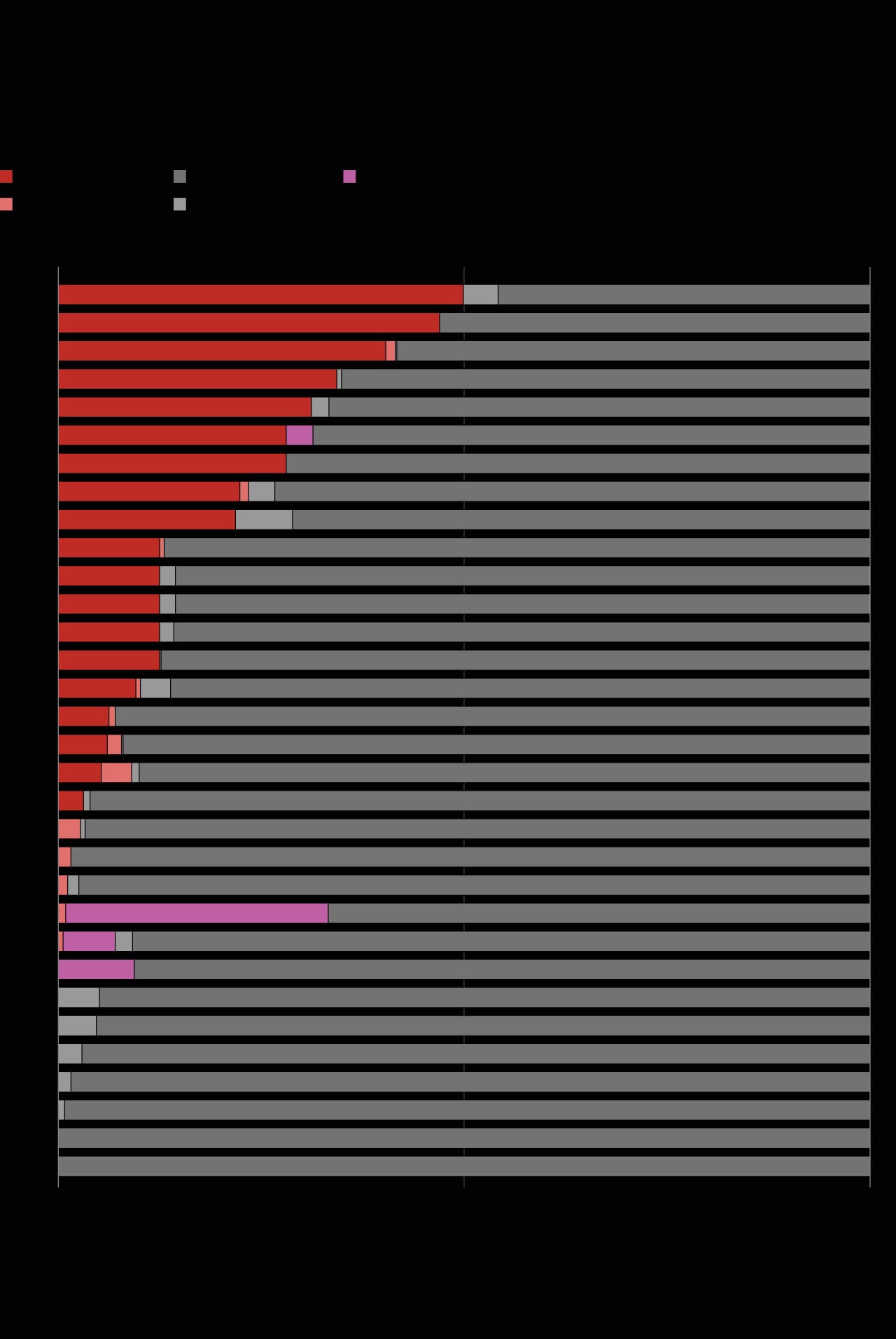
At 13 NFL franchises, still no Black full-time head coach
A team-by-team look at the percentage of games coached by Black coaches from 1990 to 2021
Other races:
Head coach
Head coach
Head coach
For teams that have relocated, data includes games from all cities where they played.
Sources: Post reporting, Sports Reference
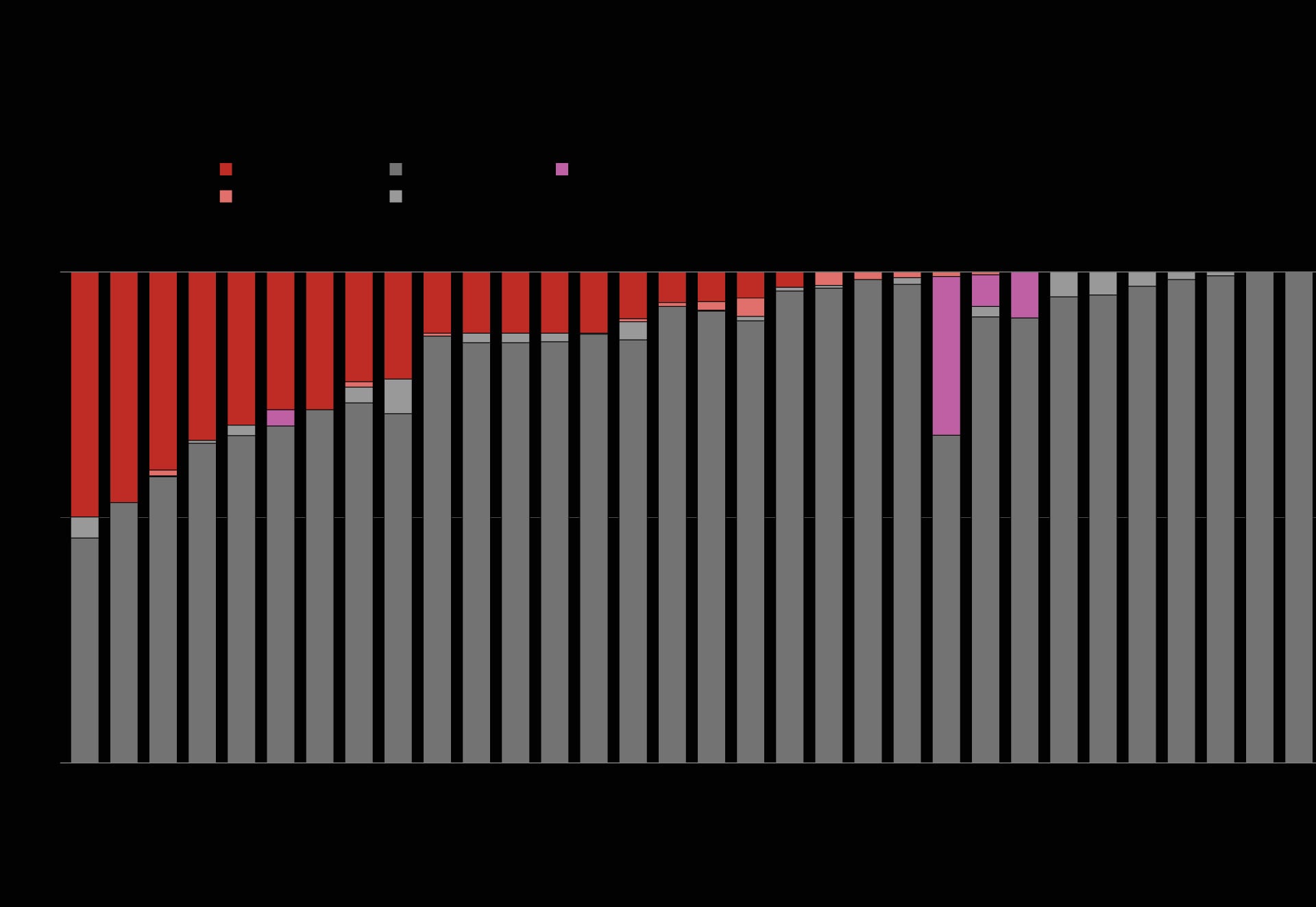
At 13 NFL franchises, still no Black full-time head coach
A team-by-team look at the percentage of games coached by Black coaches from 1990 to 2021
Other races:
Head coach
Head coach
Head coach
For teams that have relocated, data includes games from all cities where they played.
Sources: Post reporting, Sports Reference
For teams that have managed to diversify, much of the work appears to have been done by head coaches with enough power to overcome the owners’ discomfort. Parcells’s coaching tree is one of the most successful, and one of the more diverse, in NFL history. He recommended Romeo Crennel for his first job and was an early promoter of Lynn and Bowles. In 2003, he made Carthon the first (and so far only) Black offensive coordinator of the Cowboys.
This was how Parcells summed up his view of hiring assistants: “If you can help, come on in. If you can’t, get out of here.”
But the work of providing opportunities for Black coaches has disproportionally been done by other Black coaches. Among this subset, one name stands out: Tony Dungy.
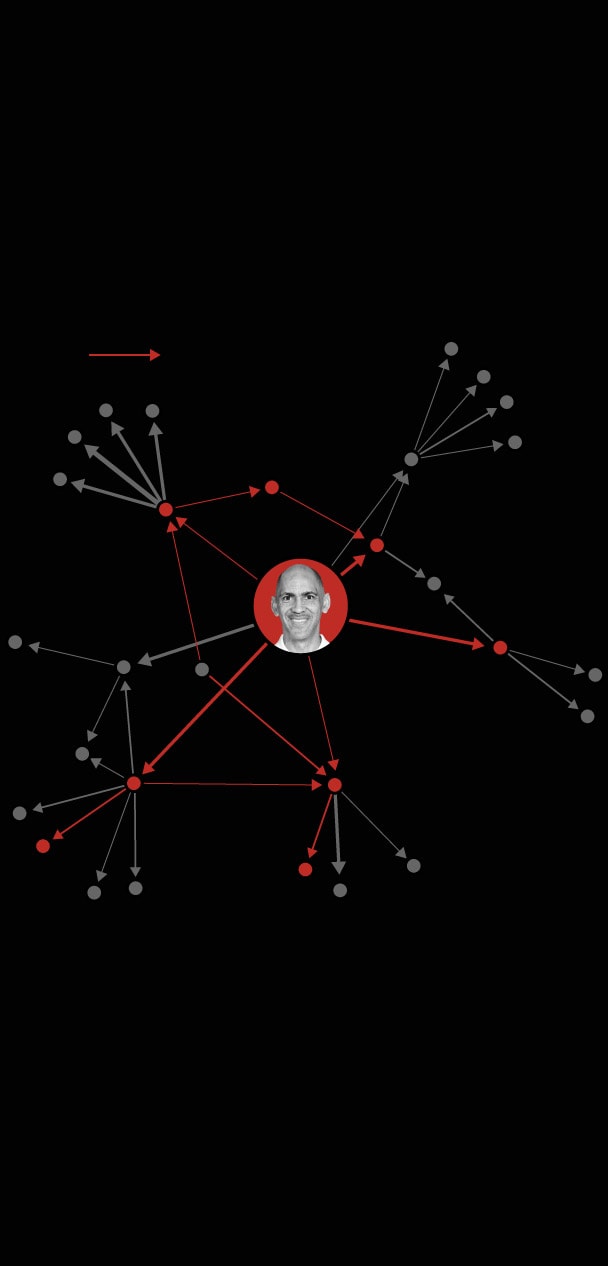
The Dungy effect
This diagram depicts Dungy’s connections with coaches who have led NFL teams, including the coaches he employed in the NFL and the coaches whom those coaches employed
Brian
Flores
Mike
Tomlin
Jim
Caldwell
Herm
Edwards
Tony
Dungy
Leslie
Frazier
Lovie
Smith
Steve
Wilks
Mike
Singletary
Line thickness represents the number of years two coaches worked together. Only connections in which one coach is a NFL head coach and the other coached beneath him are depicted. Some of the coaches depicted worked for Dungy or a former Dungy assistant after they had already served as an NFL head coach
Sources: Post reporting, Sports Reference
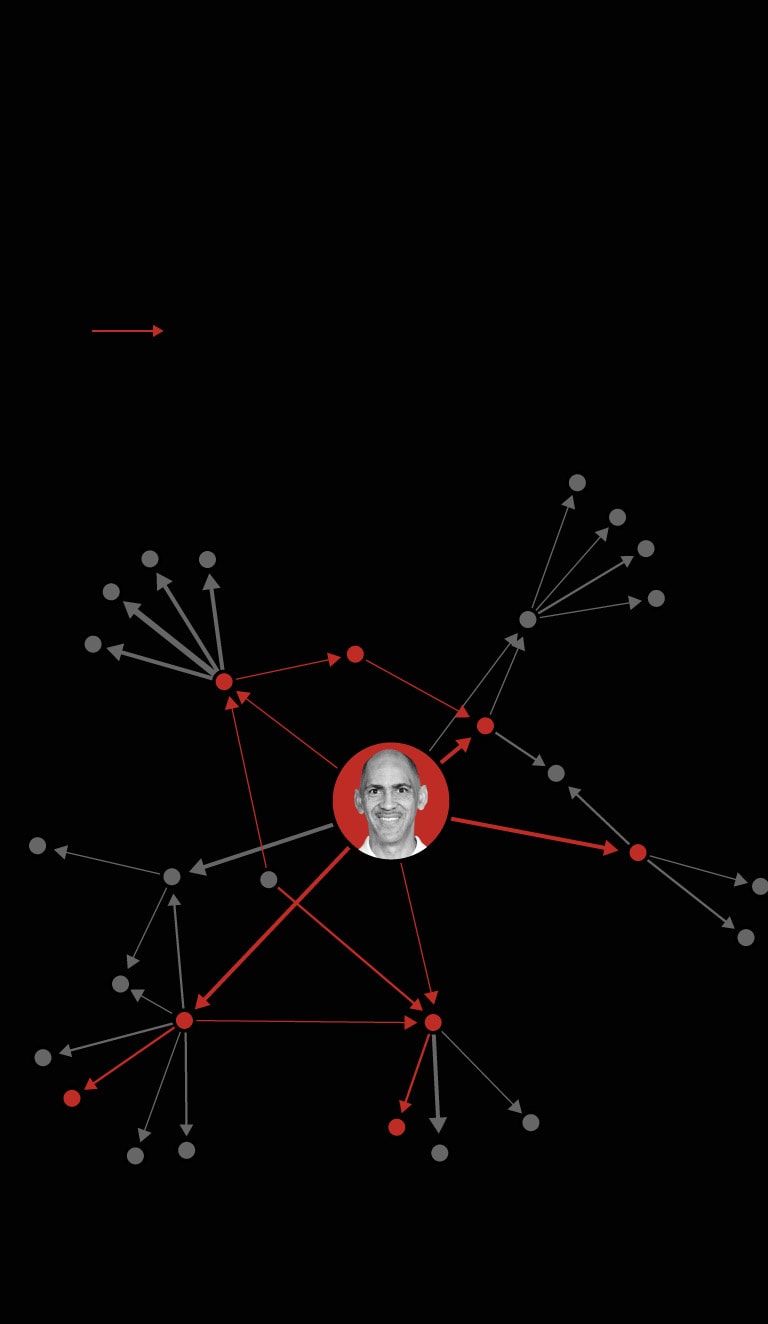
The Dungy effect
This diagram depicts Dungy’s connections with coaches who have led NFL teams, including the coaches he employed in the NFL and the coaches whom those coaches employed
Line thickness represents the number of years two coaches worked together. Only connections in which one coach is a NFL head coach and the other coached beneath him are depicted. Some of the coaches depicted worked for Dungy or a former Dungy assistant after they had already served as an NFL head coach
Brian
Flores
Mike
Tomlin
Jim
Caldwell
Herm
Edwards
Tony
Dungy
Leslie
Frazier
Lovie
Smith
Steve
Wilks
Mike
Singletary
Sources: Post reporting, Sports Reference
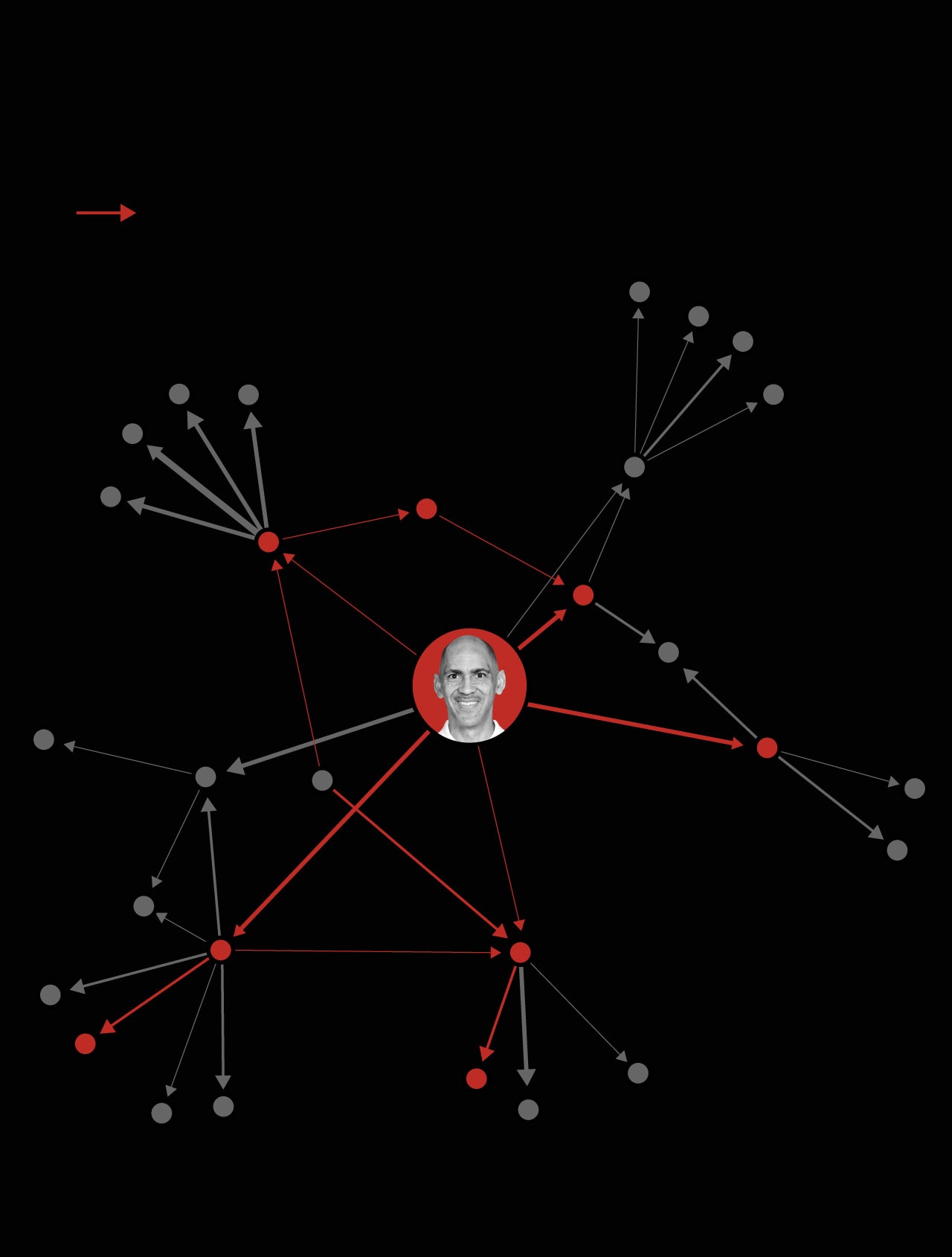
The Dungy effect
This diagram depicts Dungy’s connections with coaches who have led NFL teams, including the coaches he employed in the NFL and the coaches whom those coaches employed
Line thickness represents the number of years two coaches worked together. Only connections in which one coach is a NFL head coach and the other coached beneath him are depicted. Some of the coaches depicted worked for Dungy or a former Dungy assistant after they had already served as an NFL head coach
Brian
Flores
Mike
Tomlin
Jim
Caldwell
Herm
Edwards
Tony
Dungy
Leslie
Frazier
Lovie
Smith
Steve
Wilks
Mike
Singletary
Sources: Post reporting, Sports Reference
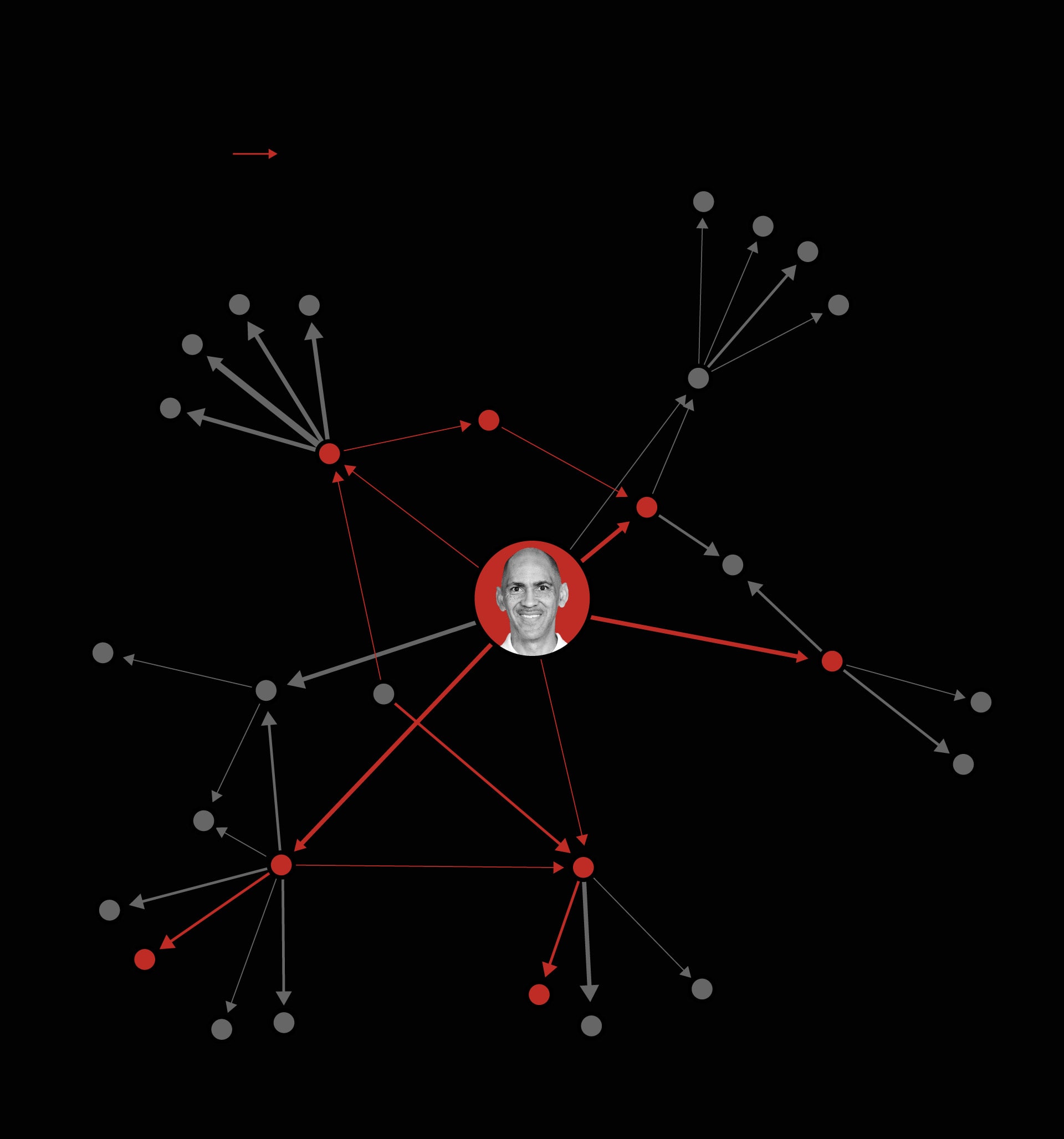
The Dungy effect
This diagram depicts Dungy’s connections with coaches who have led NFL teams, including the coaches he employed in the NFL and the coaches whom those coaches employed
Line thickness represents the number of years two coaches worked together. Only connections in which one coach is a NFL head coach and the other coached beneath him are depicted. Some of the coaches depicted worked for Dungy or a former Dungy assistant after they had already served as an NFL head coach
Brian
Flores
Mike
Tomlin
Jim
Caldwell
Herm
Edwards
Tony
Dungy
Leslie
Frazier
Lovie
Smith
Steve
Wilks
Mike
Singletary
Sources: Post reporting, Sports Reference
Of the 16 Black men who became full-time head coaches after Dungy, five served as assistants under him and a sixth, Steve Wilks, was an assistant under one of his proteges (Lovie Smith). Marvin Lewis, an intern with Kansas City while Dungy was an assistant there, went on to become the Cincinnati Bengals’ head coach, and two more Black future head coaches, Hue Jackson and Vance Joseph, were on Lewis’s Bengals staffs.
In essence, Dungy helped develop more than half of the Black men who followed him into the NFL’s head coaching ranks.
One of Dungy’s first hires with the Bucs was Herm Edwards as his defensive backs coach and assistant head coach in 1996. By 2001, Edwards had been hired as head coach of the Jets.
As Edwards recalled: “The first thing [Dungy] did, he said: ‘You’re going to be a secondary coach. But I’m going to [make you] the assistant head coach, and that’s more important than being a coordinator.’ He said, ‘I’m going to teach you how to be a head coach.’ … And so when he made decisions, I was involved. And there were times I had opportunities to leave to become a coordinator, and I chose not to. And Tony would [say]: ‘You don’t need to do that. Just trust me. You will be a head coach.’ And within five years, I was.”
Having served as the league’s main engine for inclusion for much of his career, Dungy retired in 2009 — turning a strong Colts team over to another protege, Jim Caldwell, who took Indianapolis to the Super Bowl in his first season.
“What Tony did for me during that stretch, it’s a model for [making] certain that you put a guy in the best position to succeed,” Caldwell said. “… He wanted me to see everything. He allowed me to literally do it all. … So by the time I took over the job, I had a really good feel for it.”
It would take a few more years after Dungy’s exit, as his proteges cycled through various hirings and firings, but once that engine idled, the NFL’s progress died out.
“I get frustrated when I hear about the ‘pipeline,’ ” Dungy said. “ ‘We’ve got to do this, we’ve got to do that to get more people in the pipeline.’ The pipeline is full of people. We’ve just got to get ownership to notice and to see some of these guys and get that to become the trend.”
Rise of the ‘whiz kids’
On Jan. 12, 2017, the Los Angeles Rams hired Sean McVay as their head coach. He was 12 days shy of his 31st birthday, making him the youngest head coach of the NFL’s modern era.
The Rams hadn’t posted a winning record in 14 years. But McVay led the team to an 11-5 record and a division title in his first year, then to the Super Bowl the next season. By last season, which concluded with McVay’s Rams winning the Super Bowl over the Cincinnati Bengals — who were coached by his 38-year-old former assistant, Zac Taylor — it was clear McVay was the prototype of the latest hot thing in the NFL: the bright, young football mind.
“When we listen to our media partners, they don’t consider Pep Hamilton a ‘boy genius,’ ” the NFL’s Vincent said, referring to the Texans’ 48-year-old offensive coordinator, who is Black. “So there’s a lot of obstacles that we don’t control. ‘Boy wonder,’ ‘genius’ — we [as Black men] don’t have the luxury.”
The same bias that for decades prevented Black players from being quarterbacks in the NFL now appears to be blocking their paths to head coaching jobs. From 1990 to 2015, the proportion of offensive- and defensive-minded head coaches fluctuated around 50 percent each season, The Post found. Since then, offensive-oriented head coaches have become more common (56 percent in 2022), and defensive-focused head coaches have fallen from favor (38 percent).

The league’s movement toward young, offensive coaches leaves Black coaches behind
NFL head coaches with experience on offense are overwhelmingly White overall, but the difference is even more stark for those age 40 and younger.
40 and younger
Other races
Other
races
Categories determined based on a coach’s age as
of Jan. 1 each year.
Sources: Post reporting, Sports Reference
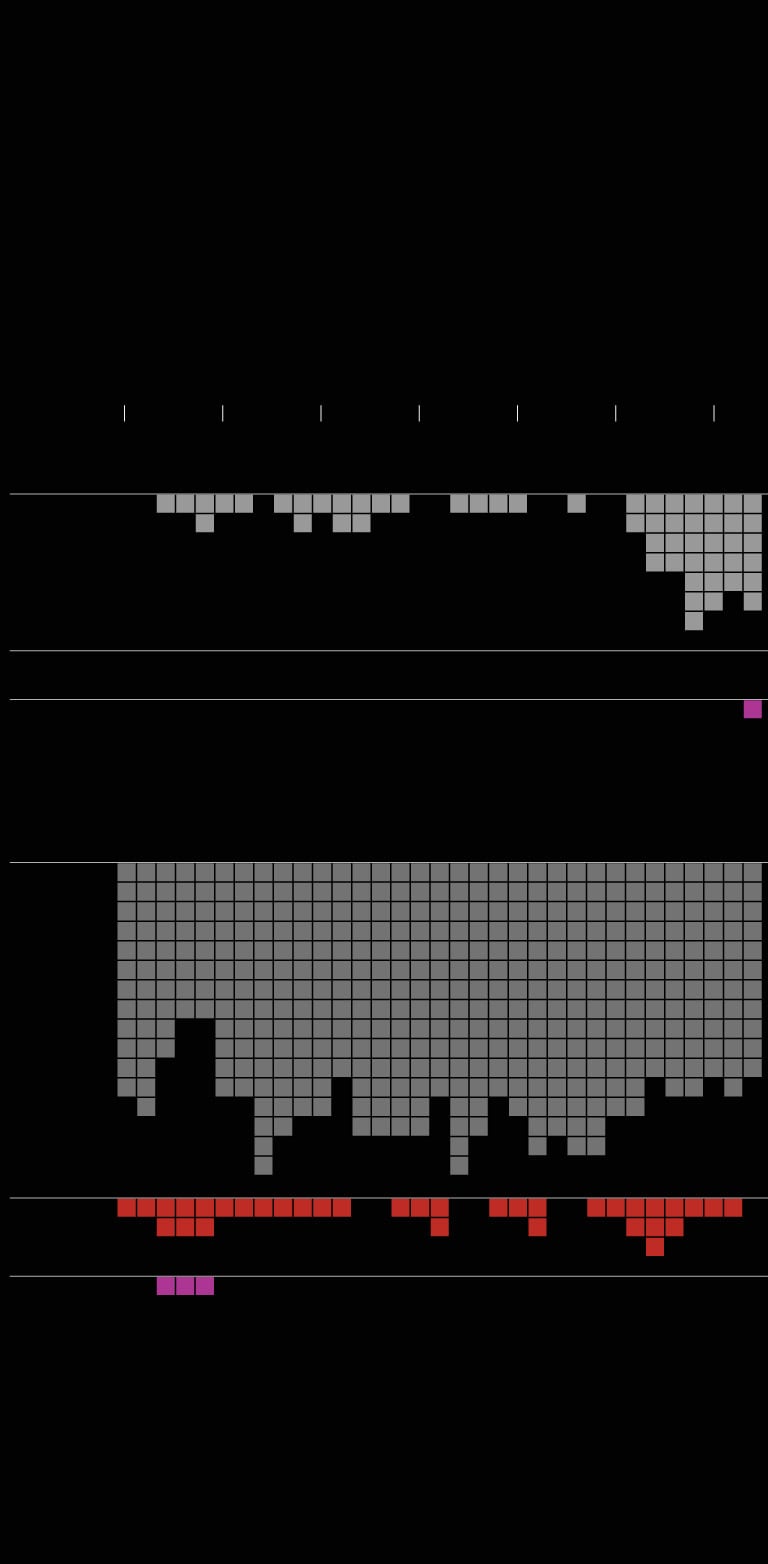
The league’s movement toward young, offensive coaches leaves Black coaches behind
NFL head coaches with experience on offense are overwhelmingly White overall, but the difference is even more stark for those age 40 and younger.
40 and younger
Other races
Other
races
Categories determined based on a coach’s age as
of Jan. 1 each year.
Sources: Post reporting, Sports Reference

The league’s movement toward young, offensive coaches leaves Black coaches behind
NFL head coaches with experience on offense are overwhelmingly White overall, but the difference is even more stark for those age 40 and younger.
40 and
younger
Other races
Other races
Categories determined based on a coach’s age as of Jan. 1 each year.
Sources: Post reporting, Sports Reference
Rules that protect the quarterback, and the highflying offenses that empower them, have made experience overseeing the passing game especially attractive to front offices. But the jobs that offer that experience — offensive coordinator and quarterbacks coach — are overwhelmingly filled by White coaches. Of the 169 coaches to serve as offensive coordinators from 1999 to 2021, 86 percent were White.
In March, the NFL enacted a rule requiring teams to employ at least one person of color as an offensive assistant beginning this season. The rule was also an acknowledgment that some teams were unwilling to do so on their own.
Since 1990, just 30 percent of Black full-time NFL head coaches have climbed the coaching ladder through a primarily offensive track, compared with 56 percent of White coaches. And two of the consensus top offensive coordinators in the game today — Eric Bieniemy of the Chiefs and Byron Leftwich of the Buccaneers, both of whom are Black and both of whom have won the Super Bowl in the past three years — have been unable to convert their success into head coaching jobs, even after several interviews apiece.
Meanwhile, of the six minority head coaches in the NFL this season, five — Bowles, Rivera, Saleh, Smith and Tomlin — come from defensive backgrounds. Only McDaniel comes from the offensive side.
In essence, the NFL has decided it’s okay for Black men to be quarterbacks — just not to coach them. And in the process, coaches said, the league has failed to learn from the lessons of the White QB era.
“A lot of the Black quarterbacks [of earlier eras], their skill set was outside the box of what the NFL did,” Dungy said. “They just needed people to think a little bit differently. And that’s what it took for the quarterbacks. Now all of a sudden … we’ve got this young group of quarterbacks that is [setting] the league on fire.
“And I think the same thing is true with coaching. We’ve got some coaches who have that same brilliance [but aren’t] getting an opportunity. We think we’re hiring the best. We think that we aren’t missing anything, but we are.”
Two coaches, two paths
Consider the career trajectories of two recent hires.
Kevin O’Connell, a quarterback who spent years on the fringes of the NFL before turning to coaching, skyrocketed through the ranks. He landed his first NFL position as the Browns’ quarterbacks coach in 2015 at age 29 and was an offensive coordinator four years later with Washington. When O’Connell, who is White, was chosen to lead the Vikings in 2022, he had spent just seven years as a football coach.
Then there is David Culley. After making history as Vanderbilt University’s first Black quarterback, Culley began coaching as soon as he received his diploma. He worked for seven colleges before making the jump to the NFL, where he logged almost three decades as a position coach; as an NFL wide receivers coach alone, he spent three times as long as O’Connell spent as an assistant in any role.

The long road
Two paths — one especially short, one incredibly long — show how experiences vary for coaches of different races.
Kevin
O’Connell
David
Culley
NFL head
coach
NFL interim
coach
NFL
coordinator
NFL
mid-level
NFL
advisory
NFL
low-level
College
head coach
College
assistant
Sources: Post reporting, Sports Reference

The long road
Two paths — one especially short, one incredibly long — show how experiences vary for coaches of different races.
Kevin
O’Connell
David
Culley
NFL
head coach
NFL interim
coach
NFL
coordinator
NFL
mid-level
NFL
advisory
NFL
low-level
College
head coach
College
assistant
Sources: Post reporting, Sports Reference

The long road
Two paths — one especially short, one incredibly long — show how experiences vary for coaches of different races.
Kevin
O’Connell
NFL head coach
David
Culley
NFL interim coach
NFL coordinator
NFL mid-level
NFL advisory
NFL low-level
College head coach
College assistant
Sources: Post reporting, Sports Reference

The long road
Two paths — one especially short, one incredibly long — show how experiences vary for coaches of different races.
Kevin
O’Connell
NFL Head coach
David
Culley
NFL Interim coach
NFL Coordinator
NFL mid-level
NFL Advisory
NFL Low-level
College head coach
College assistant
Sources: Post reporting, Sports Reference
He finally got his shot as a head coach in 2021 at 65 with the Texans in what seemed to be an impossible situation. Culley took over a team that had just lost defensive superstar JJ Watt in free agency and that was without starting quarterback Deshaun Watson all season. The Texans went 4-13, and Culley was fired after the season.
The career paths of O’Connell and Culley are emblematic. Although White and Black coaches average around 20 years until their first NFL head coaching position, they tend to take different paths to the jobs.

Stuck in the pipeline
The amount of time coaches spend in common roles before their first head coaching opportunity varies by their race.
Black coaches
White coaches
NFL
coordinator
NFL mid-level
assistant
College HC
College
assistant
Shown are the average number of years spent in each position by Black and White coaches, including those who spent no years in that role.
Sources: Post reporting, Sports Reference

Stuck in the pipeline
The amount of time coaches spend in common roles before their first head coaching opportunity varies by their race.
Black coaches
White coaches
NFL
coordinator
NFL mid-level
assistant
College
head coach
College
assistant
Shown are the average number of years spent in each position by Black and White coaches, including those who spent no years in that role.
Sources: Post reporting, Sports Reference

Stuck in the pipeline
The amount of time coaches spend in common roles before their first head coaching opportunity varies by their race.
Black coaches
White coaches
NFL coordinator
NFL mid-level
assistant
College
head coach
College assistant
Shown are the average number of years spent in each position by Black and White coaches, including those who spent no years in that role.
Sources: Post reporting, Sports Reference

Stuck in the pipeline
The amount of time coaches spend in common roles before their first head coaching opportunity varies by their race.
Black coaches
White coaches
NFL coordinator
NFL mid-level
assistant
College head coach
College assistant
Shown are the average number of years spent in each position by Black and White coaches, including those who spent no years in that role.
Sources: Post reporting, Sports Reference
Nearly half of Black coaches played in the NFL, compared with a quarter of White ones, suggesting a prerequisite exists for some coaches that doesn’t for others. Black coaches then languish for nearly twice as long as assistants and position coaches, The Post found, spending much longer in the league’s middle levels of coaching before becoming head coaches. The Black men who became NFL head coaches in the past decade, on average, had spent more than nine years longer than their White counterparts in mid-level assistant jobs and three years fewer as coordinators.
White coaches, meanwhile, spent more time in college roles — providing an additional pathway that isn’t available for Black coaches. Since 1990, seven White coaches became first-time NFL head coaches without having coached in the league, something no Black coach has done. Those seven coaches have gone a collective 161-205-1 (a .440 winning percentage).
A shorter leash
At the end of the 2021 season, two of the league’s three Black head coaches, Culley and Flores, were fired. It was reminiscent of the purge that followed the 2018 season, when five of seven Black coaches lost their jobs — and another reminder of the fleeting nature of those jobs for Black men.
Getting fired is a near-certainty for head coaches across sports. But Black NFL coaches face an especially difficult path to keeping their jobs.
Among coaches fired since the 2010 season, Black coaches have been ousted after fewer than 20 games 24 percent of the time, compared with 10 percent for White coaches.
Winning more games doesn’t necessarily save them. Since 1990, Black coaches who have won at least six regular season games have been fired that year 12 percent of the time; for White coaches, that figure is 8 percent. When their teams won at least nine games, Black head coaches were fired 8 percent of the time — vs. 2 percent for White coaches.
In other words: Since 1990, a Black head coach who wins at least nine games and a White coach who wins at least six have roughly the same chance of being fired.

Winning isn’t everything
The winning percentage at which every fired NFL coach has been dismissed since 1990 shows Black coaches have, on average, been fired after better seasons than their White peers in recent years.
Other races
Five-year average
Winning
percentage
Marty
Schottenheimer
Lovie
Smith
Steve
Mariucci
Buddy
Ryan
Jim
Caldwell
Brian
Flores
Prior to 2010, fewer than one Black coach on
average was fired each year, which affects the
average trendline.
Sources: Post reporting, Sports Reference
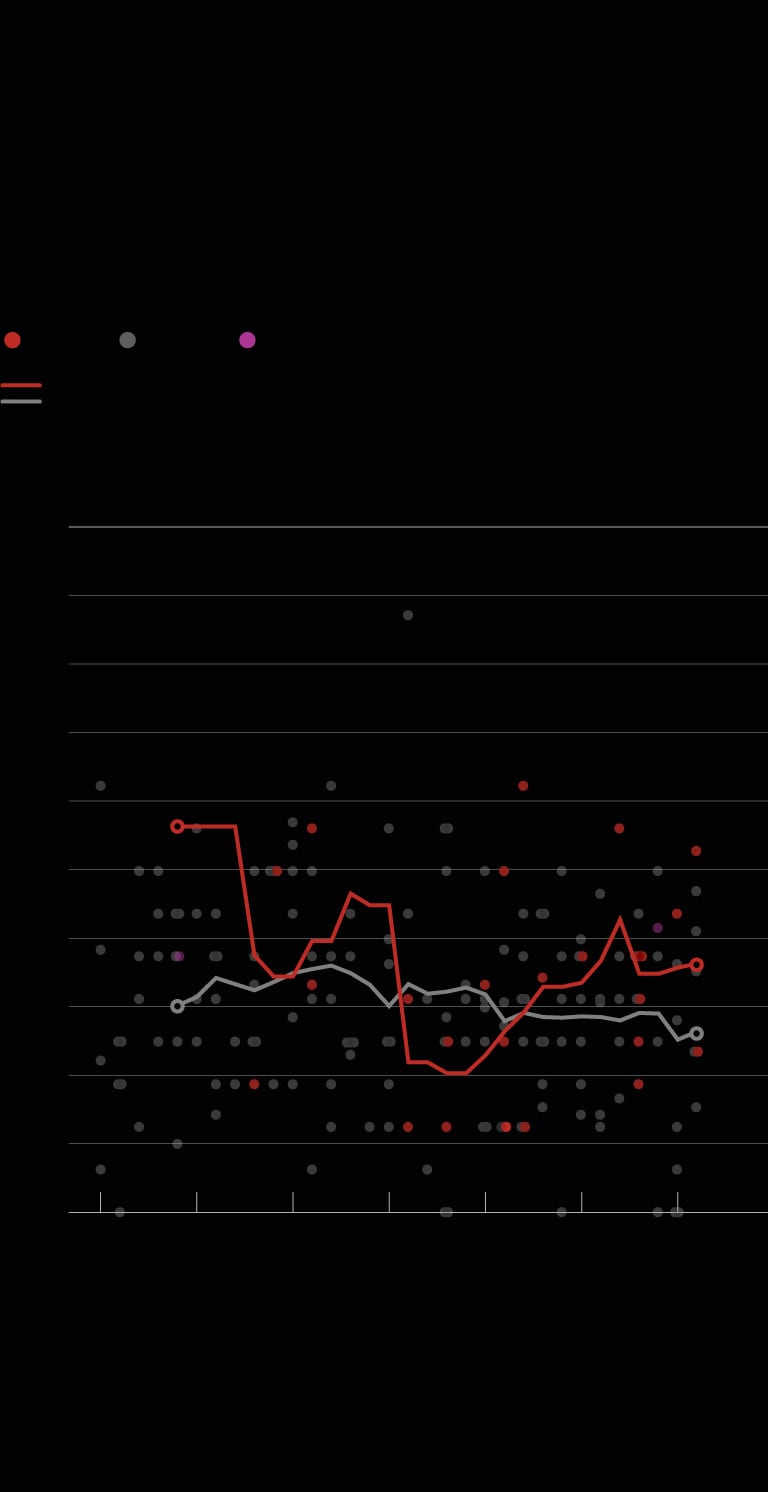
Winning isn’t everything
The winning percentage at which every fired NFL coach has been dismissed since 1990 shows Black coaches have, on average, been fired after better seasons than their White peers in recent years.
Other races
Five-year average
Winning
percentage
Marty
Schottenheimer
Lovie
Smith
Steve
Mariucci
Buddy
Ryan
Jim
Caldwell
Brian
Flores
Prior to 2010, fewer than one Black coach on average
was fired each year, which affects the average trendline.
Sources: Post reporting, Sports Reference
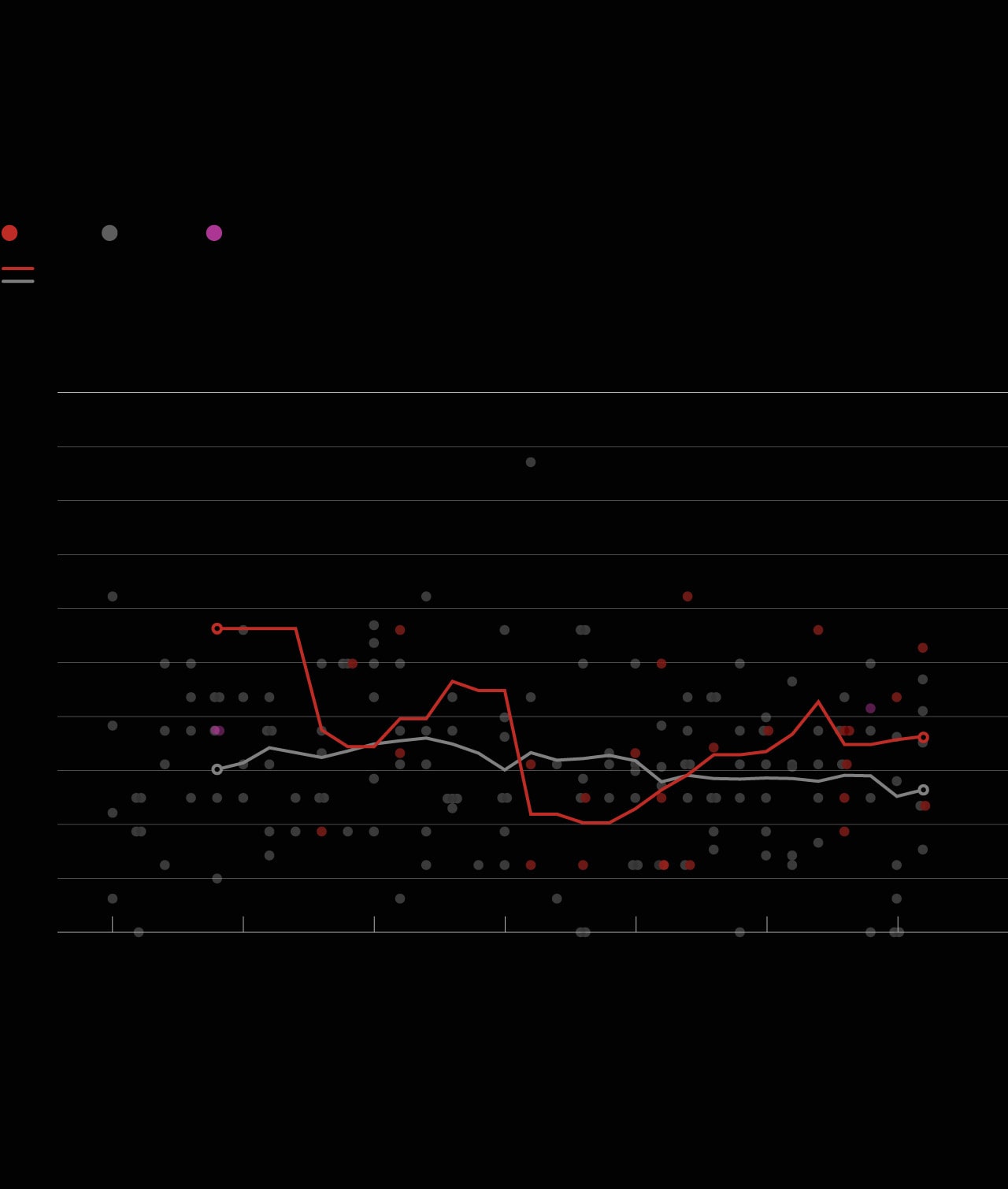
Winning isn’t everything
The winning percentage at which every fired NFL coach has been dismissed since 1990 shows Black coaches have, on average, been fired after better seasons than their White peers in recent years.
Other races
Five-year average
Winning
percentage
Marty
Schottenheimer
Lovie
Smith
Buddy
Ryan
Steve
Mariucci
Jim
Caldwell
Brian
Flores
Prior to 2010, fewer than one Black coach on average was fired each year, which affects
the average trendline.
Sources: Post reporting, Sports Reference
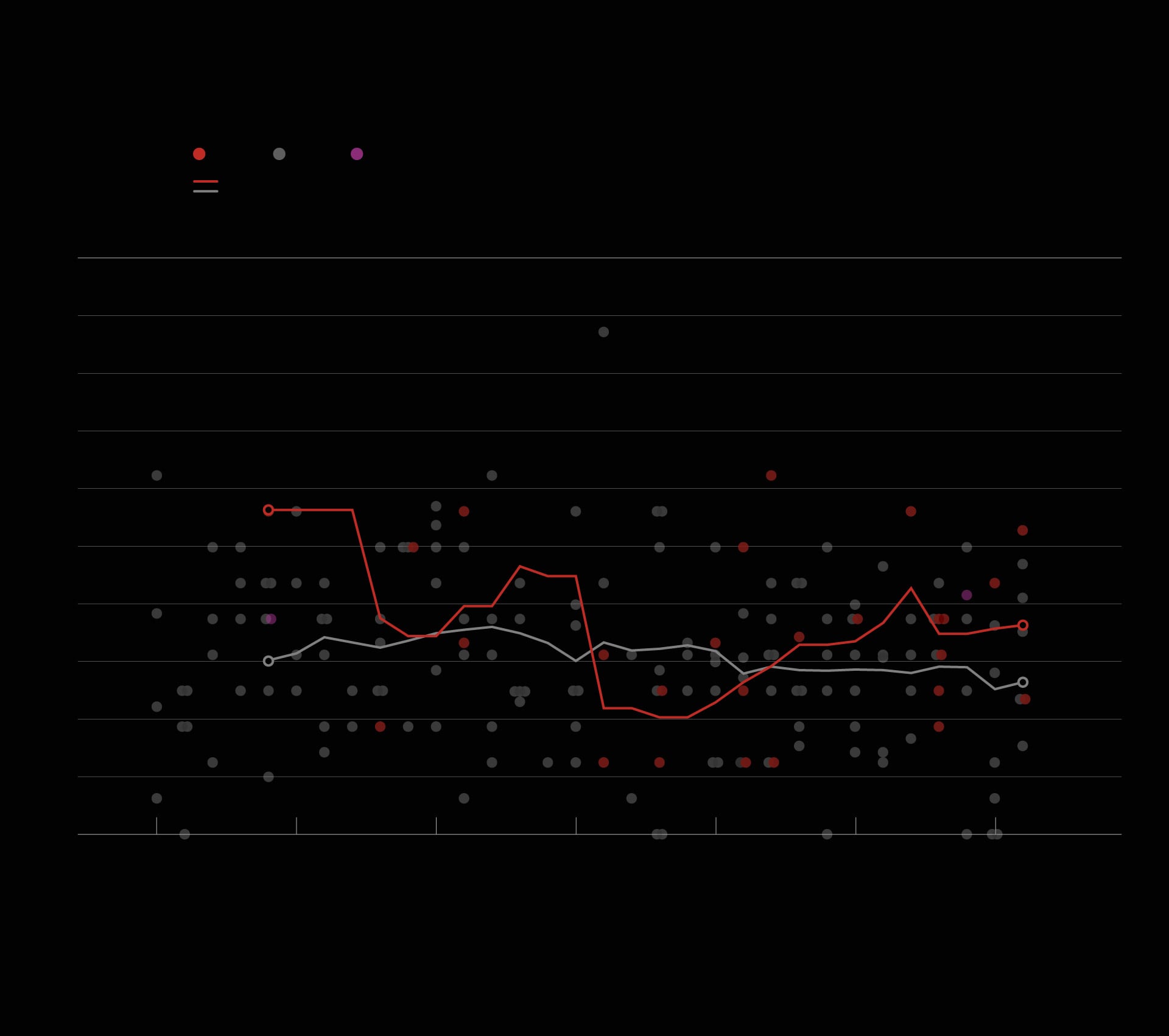
Winning isn’t everything
The winning percentage at which every fired NFL coach has been dismissed since 1990 shows Black coaches have, on average, been fired after better seasons than their White peers in recent years.
Other races
Five-year average
Winning
percentage
Marty
Schottenheimer
Lovie
Smith
Buddy
Ryan
Steve
Mariucci
Jim
Caldwell
Brian
Flores
Prior to 2010, fewer than one Black coach on average was fired each year, which affects
the average trendline.
Sources: Post reporting, Sports Reference
At least a Black coach who gets fired can say he had the opportunity to be a full-time head coach, however fleeting. The same cannot be said of another group: interim coaches, those hired to replace an outgoing head coach, often late in a lost season. That is one subgroup where Black representation far outpaces that of full-time coaches.
While Black coaches have held 13 percent of full-time head coaching jobs since 1990, The Post found, they’ve held 29 percent of the interim stints — an indication that owners are most willing to entrust their franchises to Black men only when the season already has gone sideways.
“That was the hardest thing I ever had to do,” said Mel Tucker, the head coach at Michigan State, who was the interim coach of the Jaguars for the last five games of 2011. “It wasn’t my team. It wasn’t my coaches. … So you try to improve the team. And then you try to win some games, keep the train on the tracks, you know, and then … you try to interview for the job.”
“They either want you to be the head coach or not,” he added. “It’s not like you can prove yourself in five games.”
Since 1990, Black men have held interim head coaching jobs 14 times and been retained full-time just three times. All three — Crennel with the Chiefs, Frazier with the Vikings and Mike Singletary with the 49ers — posted at least a .500 record during their interim stints. For White coaches, whether they are hired full-time has no correlation to their on-field performance as the interim coach, The Post found.
“Let’s face it: Nine times out of 10, if I’m an interim head coach, this ship is sinking. Maybe the ship’s already at the bottom of the ocean,” said Robiskie, whose interim stints, with Washington in 2000 and the Browns in 2004, did not lead to full-time opportunities. “And what am I doing? I’m trying to keep it afloat for three more weeks for the next guy who’s coming.”
Robiskie, 67, is retired, part of the generation of Black coaches for whom whatever progress is made will come too late. Without having been a full-time NFL head coach, they are mostly forgotten — Perry Fewell, Sherman Lewis, Willie Shaw, Clarence Shelmon, Ray Sherman, Jim Skipper, Emmitt Thomas and others — except in the minds of the fortunate few who came after.
“The shoulders that we stood on to become head coaches — those guys never got a bite of the apple,” Herm Edwards said. “But they set it up for us. … Guys who have been in the league for a long time, it’s probably [too late]. It’s not their fault. It’s just — that’s how it works. A lot of men of color that have been in the league for 10, 12 years, they’re sitting there going, ‘You’re right — I’m not getting [a shot].’
“But there’s maybe a young guy on your staff that might have an opportunity [someday]. That was me. That was Marvin [Lewis]. That was Tony Dungy. That was Lovie Smith. That was Mike Tomlin.”
‘They have an obligation’
In early February — deep into the hiring cycle, with the Flores lawsuit filed and the list of Black head coaches down to Tomlin — the NFL was facing criticism as unrelenting as at any time in its history.
The continued dearth of Black head coaches “is not a coincidence or a mere accident, but more systemic in nature,” Rep. Bobby L. Rush (D-Ill.) wrote in the wake of Flores’s lawsuit. “Simply put, this is bold-faced racism.”
Two unusual developments in the following weeks reduced the heat on the NFL. First, the Texans, who were reportedly leaning toward hiring Josh McCown, a then-42-year-old former NFL quarterback with no coaching experience above the high school level, pivoted to Smith.
Then Buccaneers coach Bruce Arians, a Super Bowl champion in the 2020 season, abruptly stepped down, bequeathing the job to his handpicked successor, Bowles.
“The league knows there’s a point where they should be involved,” said John Wooten, former chairman of the Fritz Pollard Alliance, a nonprofit organization dedicated to championing diversity in the NFL. “They’re doing what they should be doing as a league if they want the diversity and inclusion that they say they want. We expect them to step in whenever a voice is needed or wanted or accepted. … In those cases, I think they have an obligation.”
The events of this February left some with a distinct sense of deja vu.
At the end of the 2001 season, the firings of Green by the Vikings and Dungy by the Buccaneers briefly left the NFL with one Black head coach. That offseason, attorneys Cyrus Mehri and Johnnie Cochran Jr. commissioned a report exposing the league’s treatment of Black coaches and threatened legal action. The NFL adopted the Rooney Rule the next year.
“Twenty years later, the same thing happens,” Dungy said of the parallels between those offseasons. “And in this 20-year period, it’s like the NFL didn’t hear. … I think Brian Flores just felt like something needed to be done.” (Flores declined to comment for this story.)
Over the years, the Rooney Rule has been tweaked and strengthened. It now requires teams to interview two external minority candidates for head coach openings and one for coordinator and quarterbacks coach openings. Teams are rewarded with draft picks if they develop a minority coach who leaves to become a head coach or a GM. And teams are now required to employ at least one minority coach on offense.
“I think you could certainly argue that we didn’t respond quick enough to the negative trend,” said the Steelers’ Rooney, who chairs the NFL’s Diversity, Equity and Inclusion Committee. But through improvements to the rule and honest self-appraisal by those in the league, he said, there is now “a sufficient amount of scrutiny to the hiring process so that if we feel like teams are skirting the rule or not abiding by the rules, that’s going to be identified and addressed. So there’s a lot of scrutiny inside the league now.”
Yet all the improvements and all the scrutiny have yet to bridge the widest gap of all — the one residing in the minds of the league’s owners. The result is a growing sense of hopelessness among Black coaches.
“We don’t feel like there’s a lot of hope when Marvin Lewis is still [out of the league] and Jim Caldwell is still sitting at home,” said Hue Jackson, the former Raiders and Cleveland Browns coach and the current coach at Grambling, a historically Black university. “You talk about two of the guys who were trendsetters, and they can’t get an opportunity. And so now we’re talking about the young minority coach getting a chance. And that really doesn’t happen. But it happens for our [White] counterparts, you know? So tell me where the hope is. Show me where the hope is.”
Rather than attempt to force owners into specific hires, which it is powerless to do anyway, the NFL has focused on populating the pipeline with diverse candidates, empowering them through symposiums and workshops — and asking for patience.
“Stick to the plan. Stick to the plan. Stick to the plan,” said Jonathan Beane, an NFL senior vice president and its chief diversity and inclusion officer. “You have to have a plan that addresses the issues, is well thought out and one that you can believe in. Otherwise, you shouldn’t even try. We believe that is going to get the results. Stay the course. … I love to read articles about the hiring cycle and our efforts — even the shortcomings. I’m going to soak it all in. We can’t be afraid of scrutiny.”
This May in Atlanta, the NFL held what it called the inaugural Coach and Front Office Accelerator Program for prospective head coach and general manager candidates of diverse backgrounds. While the program could easily blend into the rest of the league’s sprawling but mostly toothless diversity efforts, the accelerator program stood out because it placed more than 60 aspiring head coaches and GMs, the majority of them Black, face to face with ownership representatives of each of the 32 teams.
“Everyone is very focused on trying to find a way to get this right, to be an organization that is the gold standard for inclusion and diversion, not just in leadership roles but throughout the organization,” said Dasha Smith, the NFL’s executive vice president and chief administrative officer.
Still, one could argue these measures are designed to make the league appear proactive without addressing the core issue — as critics said the NFL did during previous controversies, such as those regarding concussions and players kneeling during the national anthem.
Real change, at least when it comes to an institution as powerful as the NFL, rarely comes without intense external pressure. That is how it happened two decades ago with the introduction of the Rooney Rule. There are many who hope a similar upheaval arrives in the coming years — one that results not in more interviews but in head coaching jobs.
If that happens, the vehicle is likely to be Flores’s lawsuit.
“I’m proud of him for what he did, what he stands for, [and] disappointed that it had to come to that,” Jackson said. “Somebody had to take a stand for minority coaches. Somebody [had] to stand on the hill and fight. …
“We’re talking about the National Football League, and people don’t want to challenge the National Football League. But at some point, people got to wake up.”






